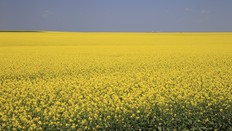Cartels smuggle a different type of cocaine to new labs overseas
Coca paste — cheap, unrefined cocaine -- is being shipped to laboratories as far away as Italy to be processed into the final powder

Article content
Cartels are offshoring more cocaine production outside of Colombia and exporting lower-grade drugs that are easier to conceal in products such as paints and plastics.
Increasingly, the groups are smuggling coca paste — cheap, unrefined cocaine — to laboratories as far away as Italy and the Netherlands to be processed into the final powder, according to the United Nations Office on Drugs and Crime.
“In terms of risk, if a shipment gets intercepted they’re losing less,” said Leonardo Correa, who heads the UNODC’s monitoring and technical analysis in the Andes. “Coca paste is also easier to mix with other products, which facilitates smuggling.”
The evolving tactics seek to profit from soaring production — with global output up more than third in a year — driven partly by Colombian President Gustavo Petro’s decision to scale back the military campaign against the private armies of drug traffickers. It’s a policy that may change after 2026 elections if angry voters back candidates promising a security crackdown. Petro’s approval rating fell to 29% in June, according to local pollster Invamer.
Global cocaine production reached a record of an estimated 3,708 tons in 2023, up 300% over the last decade, according to the UNODC’s 2025 World Drug Report published Thursday. That makes it the fastest-growing illicit drug market.
While drug violence “has long been a problem in Latin America and the Caribbean, it is now spreading to countries in Western Europe,” the UNODC found. “Traffickers are also riding a wave of record production, pushing into new markets across Asia and Africa.”
Chemical Camouflage
Smuggling gangs have succeeded in mixing coca paste into products such as asphalt, vegetable oil and charcoal, according to the UN. Experts with some knowledge of chemistry then extract the product at the destination, Correa said.
In December, Portuguese police dismantled a major cocaine laboratory. Such laboratories have also been found in Spain, Central America and elsewhere.
Satellite images show the increase in cocaine supply is being fueled by a surge in production of coca, the raw material for the drug, in Colombia. Output in Bolivia was stable, while in Peru it fell slightly, according to the UN.
In Colombia, Petro has sought “total peace” through negotiations with guerrillas and the private armies of drug traffickers since taking office in 2022. So far these talks have failed to yield major demobilizations, while the groups have taken advantage of a relative lack of military pressure to seize more territory.
Many farmers have turned back to growing coca, after crop substitution programs introduced as part of a previous peace process in 2016 have been underfunded and poorly implemented. Producing coca provides them with a more reliable income.
Colombia’s surging coca production and Petro’s strained relationship with President Donald Trump put the Andean nation at risk of being decertified as a partner in the war on drugs by the US. That would put the country in the same category as Bolivia and Nicolas Maduro’s Venezuela, and limit access to some aid and loans.











Postmedia is committed to maintaining a lively but civil forum for discussion. Please keep comments relevant and respectful. Comments may take up to an hour to appear on the site. You will receive an email if there is a reply to your comment, an update to a thread you follow or if a user you follow comments. Visit our Community Guidelines for more information.